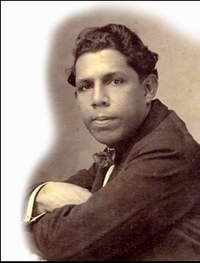4.1.1.2.3 Eroticism in the poetics of Regino E. Boti (1878 – 1858)

Many of the poems of a sensual or frankly erotic nature are present in the “Erotic Hymnary” section of “Mental Arabesques,” but as a subject it deserves independent analysis insofar as it brought an unusual carnality to Cuban poetry after the idealizing evocations of both the Romantic generation and the modernism associated with Julián del Casal’s worldview.
The collection of poems clearly shows the intention of privileging the real contact of lovers, with a rich background of sensations, over the pale imaginaries in which delight resides precisely in the non-fulfillment of desires, in distance, in impossibility, as a source of poetic inspiration.
The hymn to women, her very deification but from the flesh, breaks with conventional canons; even more than desire, he prefers the laxity that follows its satiation, as can be seen in his pieces “Snow in a Field of Light” and “Nuptials and Vision in the Bedroom.” Feminine beauty is directly associated with the naked body—”prepubescent flank,” “feline belly,” “dominant breast,” “living snow of your white body”; these are expressions that belong to the first of the poems cited—and with pleasure.
Another of the poems of this nature is entitled precisely “Cielo carnal” (Carnal Sky), which is explicit as to the category it grants to eroticism anchored to the material—which does not mean a conception of human sexuality as devoid of spirituality—which can be considered the masculine pole of the line opened years earlier by an essentially solitary poetess, Mercedes Matamoros.
For its part, “Pompones de carne” returns to the same topic, with an ambiguous praise of women, now equated with sensual pleasure—the right and attitude to it—which contrasts with the narrow perspective of other authors on the subject. “Your hips have wisdom…”, the verse that opens the poem, places carnality not only on a par with the spirit but also with knowledge, culminating in the following stanzas:
“I love your hips”
because in several ways
They have been able to give me unparalleled pleasure
of being lubricious spheres
and being spinners
from the spinning wheel of the Paraisal Act.
And seeing your gentle hips –
coupled with you in various ways-
move their enchantments wisely
whiteness of summer cloud,
I have felt a craving for beasts,
to adore them, to hurt them, if you were not
sometimes so cold and so paradoxical,
so cold and so irrational,
and so sensual…”








